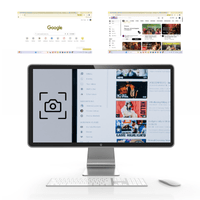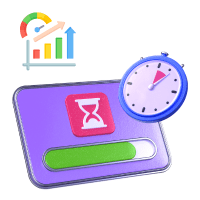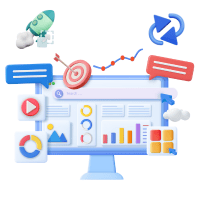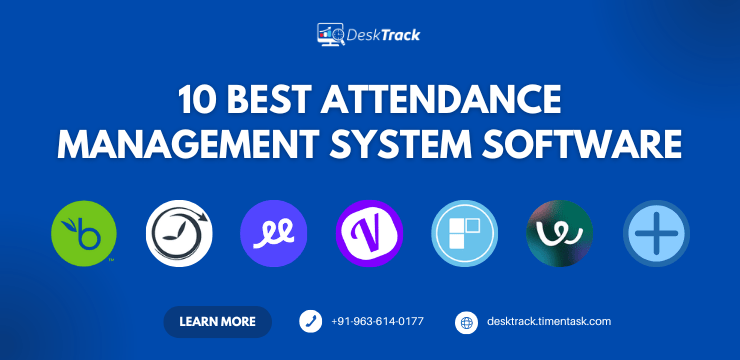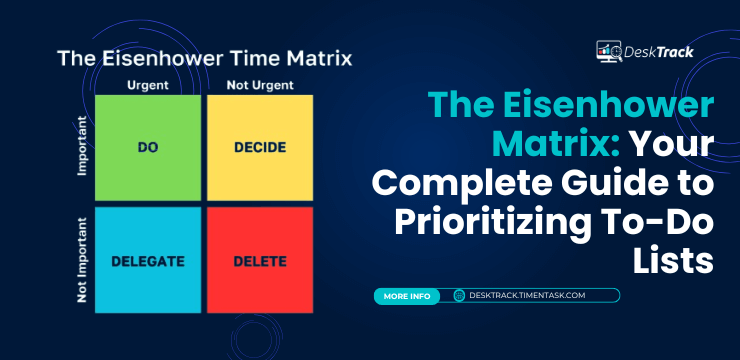
To get things done, you require creating a to-do list first. However, getting the right thing done by the right HR at the right time is a challenge. Knowing what to address yourself, what to delay, what to delegate, and what to ignore is the key to success. Moreover, as simple as this sounds, nailing it to perfection can get quite overwhelming.
This is where the Eisenhower matrix, also called the time management matrix, the Eisenhower box, and the urgent-important matrix, comes in. It’s a task management tool that helps you separate the urgent tasks from the important ones, letting you establish an efficient workflow. Today’s blog is all about that with some useful tips along the way. So, let’s get started.
Why Are We Not Good at Prioritizing Tasks?
So, when it comes to deciding which task to focus on at any given time, nothing goes according to plan. However, why is that? When we have to choose between tasks of mixed urgency, our priority always goes to time-sensitive tasks. That’s why we struggle with task and time prioritization. Furthermore, this is more prominent in self-proclaimed busy people.
In short, it’s all psychological. However, you can simplify this with the right project management software.
What is the Eisenhower Matrix?
Simply put, the important urgent matrix is an easy-to-use decision-making tool that assists you in subdividing your tasks into urgent, important, not important, and not urgent. Each task goes into one of the 4 boxes, prioritizing the tasks you should focus on first and the ones you should hand over or ignore like they don’t exist at all. The matrix can help you if:
- You are busy all day doing small, urgent, and unexpected tasks, such as solving everyone’s issues, instead of concentrating on the tasks you want to finish.
- You are busy. However, you feel that your work has little to no influence.
- You are not experiencing any progress on long-term objectives.
- You overthink all the time.
- Easily say yes even when you want to say no.
- Find task delegation a challenge.
Read Also: Top 15 Time Tracking Software for Freelancers
The Urgent Vs. Important Matrix
Urgent and important words with similar meaning, often used confusingly. However, that’s not how it functions in reality:
|
Need your immediate attention. You must complete these unavoidable tasks now. There are transparent consequences if you don’t finish them within a particular timeline, and the longer the delay, the more the stress and burnout. For example:
|
|
These tasks do not require your immediate attention. However, they help you reach your long-term goals. Overall, you need to carefully plan how to delay or delegate these tasks to efficiently use the available HR. For instance:
|
The Quadrants of the Eisenhower Matrix
As we mentioned before, the prioritization matrix has been divided into 4 quadrants. Here’s what one would look like.
| Urgent | Not Urgent | |
| Important | Do:
|
Delay:
|
| Not Important | Delegate:
|
Delete:
|
1. Do
Simply put, these are urgent and important tasks. Think of them like disasters with deadlines, which you need to immediately complete.
- Do these tasks first as they need your urgent aṭṭention.
2. Delay
Next on the Eisenhower matrix, we have not-so-urgent yet important work. There is no deadline chasing you around. However, these tasks help you achieve your long-term goals.
- Schedule them for later.
3. Delegate
Then come the tasks, which you don’t have to do. However, someone has to do some. So, what you do is delegate the urgent but non-important tasks to your teams.
- Hand these tasks over to others.
4. Delete
This work is neither crucial nor immediate, such as email notifications and social media chats. You know what to do with these.
- Get rid of these tasks from your list.
Steps to Prioritize Your Tasks with the Prioritization Matrix
Simply making the Eisenhower matrix and not acting upon what you have will not get you anywhere. You just need to put in a little effort. Trust us, it’s worth your time.
1. Track Your Ṭime
Track the time it takes you to complete your tasks from your to-do lists with the best time tracking software. Note this data and accordingly add the tasks in the matrix.
2. Organize Your Tasks
Arrange your tasks across the 4 quadrants of the Eisenhower matrix. You may have to balance this according to what your workday looks like. Asking yourself these questions will also clarify which task will go into which box.
- Was this urgent?
- Was this important?
3. Rebalance Your Matrix (If Needed)
If there are more tasks in the second, not-so-urgent yet important box, then you are good to go. However, if that’s not the case, rebalance your Eisenhower method matrix.
- Quadrant 1: You need to take the time out to plan, anticipate, and prevent any issues to reduce the tasks here. We recommend collaborating with colleagues, clients, and managers to reorganize the workflow.
- Quadrant 3: To reduce the number of tasks in this box, strategize to hand over, delete, or limit the hours you spend on them.
- Quadrant 4: If this box is taking up most of your time, then you are most likely stressed and unsatisfied. In this case, continue with time tracking to identify the time-wasting activities and strategize to drop them.
4. Repeat
Repeat steps 1 to 3 each week for a month, and you will see your tasks gradually shift to the second quadrant. Continue using the prioritization matrix for consistent improvements.
Read Also: Top 15 Timekeeping Software & Apps in 2025
Benefits of Using the Eisenhower Matrix
By now, you must have understood that professionals and businesses around the world commonly use the Eisenhower method of time management. Here’s why.
1. Improved Focus & Prioritization
As the Eisenhower matrix is also known as the prioritization matrix, it is bound to make your concentration and task prioritization better. By scheduling, delegating, and dropping important but not urgent, urgent but not important, and neither important nor urgent tasks, you are only left with the work that is only doable under your skillset.
2. Enhanced Decision-Making
With all your tasks from your to-do lists sorted across quadrants and your time tracked, you get more clarity in deciding:
- Who will do what?
- The time at which certain tasks must be completed.
- When to collaborate?
- Which tasks to do, delay, delegate, and drop.
3. Strategic Delegation
Sorting your tasks across the Eisenhower matrix also helps you strategically delegate tasks to your teams. You will know which task should be assigned to whom for maximum success, efficiency, and productivity.
4. Reduced Stress
When every task is properly scheduled, delegated, and dropped accordingly, everything goes according to plan. Even if some work goes off track, you have enough time to manage it to re-optimize the workflow. Overall, there is less stress at the end of every workday.
Tips for Prioritizing Tasks for Businesses
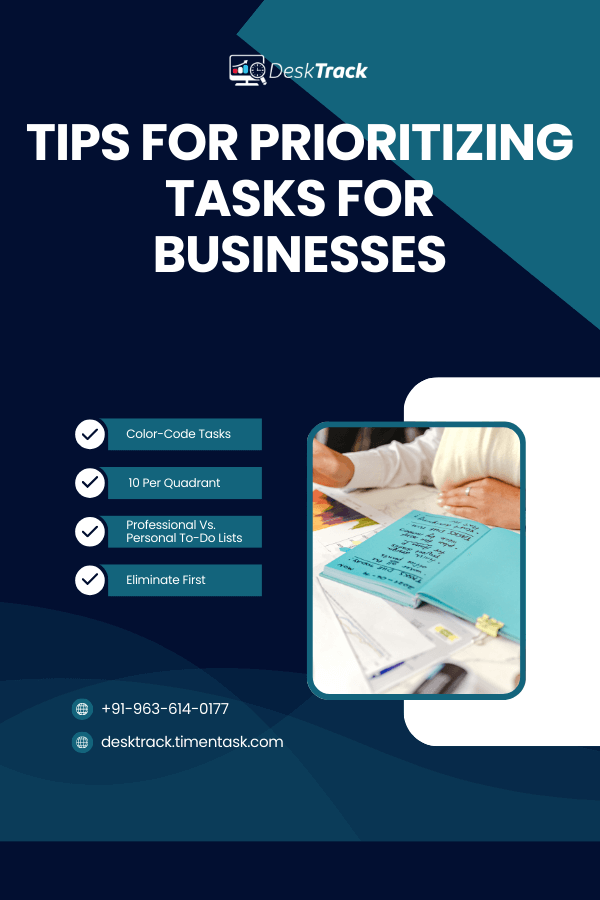
The best way to differentiate urgent from important is to use the prioritization matrix. However, you still might be finding it difficult to set work priorities. Here are some expert tips that will help.
1. Color-Code Tasks
Color-coding tasks helps you visualize your priorities. Based on the priority levels of the tasks, use these colors to sort out different priorities.
- Green: Highest priority
- Yellow: Second-highest priority
- Blue: Third-highest priority
- Red: No priority
Based on this, you will know that the green tasks are the ones you need to do, the yellow work is the one that needs scheduling, blue goes in quadrant 3, and you can ignore the red ones.
2. 10 Per Quadrant
Another thing you can do is try to limit your tasks to only 10 per box in your urgent important matrix. This ensures proper workload balance for everyone. In case there is an imbalance, you already know how to readjust your tasks.
3. Professional Vs. Personal To-Do Lists
Simply put, make 2 matrices instead of just one Eisenhower matrix. You might have understood that one will be for your errands and another will be for your professional life. This also limits your tasks in the matrix.
4. Eliminate First
Another great idea is to address quadrant 4 first, then move on to boxes 3, 2, and 1. Simply put, sort out the tasks that will only waste your time, such as distractions or email notifications. This simply makes things much simpler because you always collectively focus on the important and urgent tasks.
Read Also: Discovering the 15 Most Common Leadership Styles: Which One is the Best for You?
An Example of the Eisenhower Matrix
To provide you with a better understanding, we made our own Eisenhower decision matrix to show you.
| Urgent | Not Urgent | |
| Important | Do:
|
Delay:
|
| Not Important | Delegate:
|
Delete:
|
DeskTrack Makes Task Prioritization Much Simpler
The only drawback to the Eisenhower matrix is that making one takes a lot of time. Plus, you might not get used to this change either. DeskTrack is the better alternative to prioritize your tasks. All you have to do is label each task across your workflow. Plus, you can even make 4 workflows according to the name of the 4 quadrants for easy understanding. Furthermore, DeskTrack provides the capability to add new task statuses, which you can customize as:
- Do
- Delay
- Delegate
- Drop or delete
It’s as simple as that, plus with its outstanding features, such as real-time screenshot monitoring and app, URL, and file usage tracking, you can even monitor how work is being done and prevent any insider threats. Try now, and realize why it’s the most chosen employee monitoring software around the world.
Frequently Asked Questions (FAQ)
Q. What is the Eisenhower Matrix?
Ans. Simply put, the important urgent matrix is an easy-to-use decision-making tool that assists you in subdividing your tasks into urgent, important, not important, and not urgent. Each task goes into one of the 4 boxes, prioritizing the tasks you should focus on first and the ones you should hand over or ignore.
Q. What is an Example of the Eisenhower Matrix?
Ans. Here’s a short instance of the matrix in use.
Do:
- Write a blog post due tomorrow.
- Complete a project proposal.
- Respond to client emails.
Delay:
- Register for a professional development course.
- Attend a networking event.
- Enhance a personal project.
Delegate:
- Upload blog posts.
- Transcribe meeting notes.
- Field non-client emails.
Delete:
- Work about work.
- Attend a status meeting.
- Share status approvals.
Q. What Kind of People Need to Use the Prioritization Matrix?
Ans. The matrix can help you if:
- You are busy all day doing small, urgent, and unexpected tasks, such as solving everyone’s issues, instead of concentrating on the tasks you want to finish.
- You are busy. However, you feel that your work has little to no influence.
- You are not experiencing any progress on long-term objectives.
- You overthink all the time.
- Easily say yes even when you want to say no.
- Find task delegation a challenge.
How to Use the Eisenhower Matrix Daily
Ans. To use the prioritization matrix every day, apply the following tips.
- Assign clear deadlines
- Batch similar tasks together
- Don’t overload quadrants
- Label only truly urgent tasks as urgent.
- Start and finish your workday with important work
Q. Can the Prioritization Matrix Reduce Procrastination?
Ans. Yes, it can. Since it helps you prioritize your to-do list based on urgency and importance, you won’t have to stare at a big chunk of tasks. Overall, you will have your regular workday planned out and so you won’t overthink or procrastinate.




